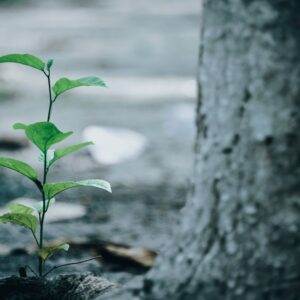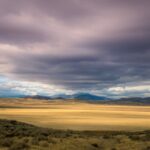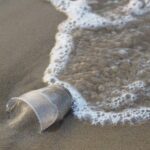Local non-profit civic organization
What tools are most relevant for conservation monitoring in 2023
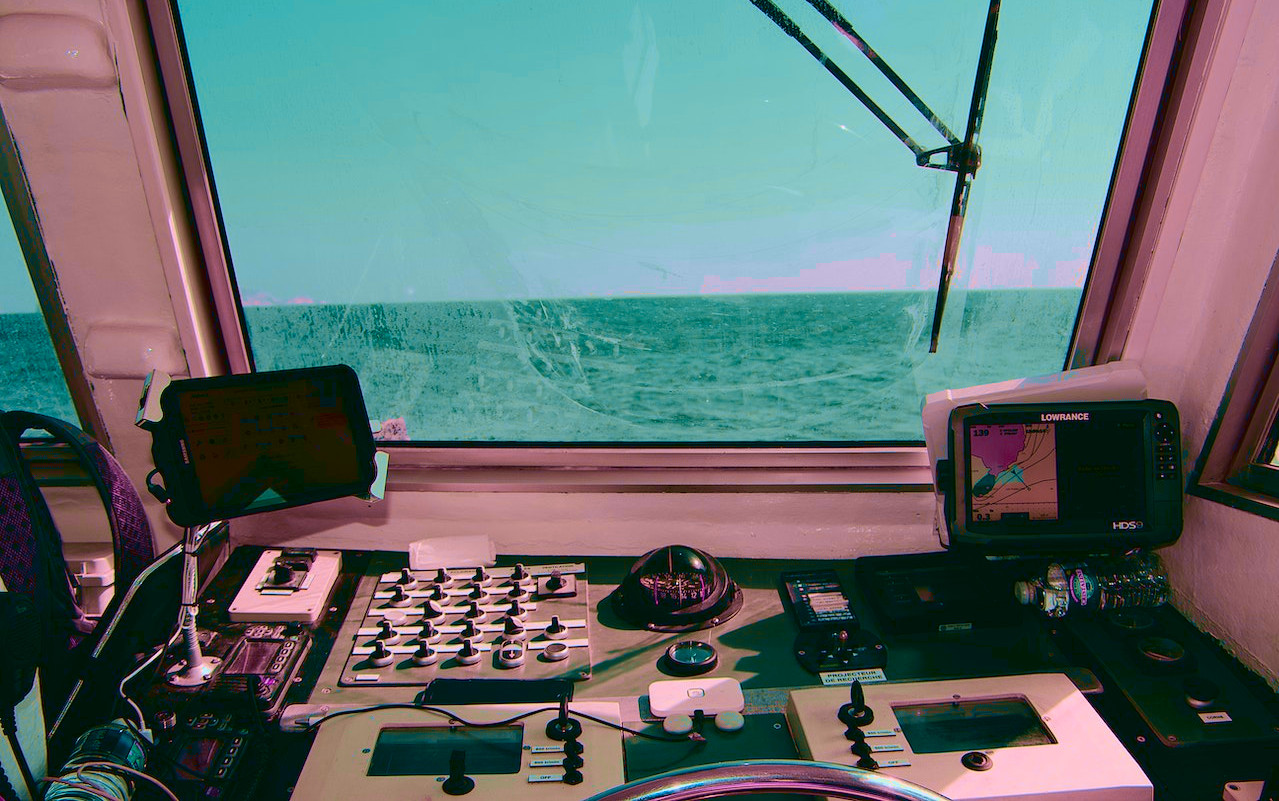
Are you ready to see conservation observation take on a whole new level in 2023?! The tools that are coming onto the scene are nothing short of game-changing. We’re talking drones that can capture high-resolution images of wildlife and habitats from above, augmented reality headsets that let you see virtual overlays of information on what you’re observing in real-time, and sophisticated sensors that can detect even the tiniest changes in temperature, pressure, and air quality. All of this incredible technology is going to enable scientists, conservationists, and citizen scientists alike to gather data faster, more accurately, and with greater precision than ever before. With these tools at our fingertips, we have reason to be truly excited about the breakthroughs and discoveries that will unfold in the world of conservation in the years to come.
Observing water resources with quadcopters
Picture this: a bird’s eye view of lakes, rivers and oceans, all from the comfort of your own quadcopter. Thanks to new drone technology, we now have the ability to observe water resources from an entirely new perspective. Not only does this allow for stunning visuals, but it also enables us to collect crucial data on the health and quality of our water systems. With quadcopters, we can fly over reservoirs or coastlines to gain a better understanding of water levels, erosion patterns, and even the presence of harmful algal blooms. The opportunities for environmental research and conservation are endless. The power to observe and protect our planet’s most precious resource is now literally at our fingertips. So, who’s ready to take the quadcopter for a spin?
Deployment of sensors monitoring the condition of water resources
Attention, eco-warriors! Are you excited to hear about the deployment of sensors that monitor the condition of water resources? This cutting-edge technology empowers us to keep an eye on water usage, pollution, and other environmental concerns in real-time. Imagine the possibilities: with this data, we can identify problem areas and make informed decisions to protect our precious water resources. It’s time to take our commitment to sustainable living to the next level. Let’s celebrate this innovative technology and the progress it represents!
Monitoring of water resources temperature with satellites
Just imagine being able to accurately and continuously monitor the temperature of our planet’s water resources from space! Thanks to our advanced satellite technology, we can now do just that. This breakthrough is revolutionary for our understanding of climate change, as the temperature of our oceans, lakes, and rivers is a crucial factor that affects countless aspects of our lives. The excitement surrounding this innovation is palpable, as scientists and researchers eagerly await the insights that will be yielded from such precise and real-time data. With this satellite monitoring, we can gain valuable information about how our water ecosystems are being impacted, and take action to protect them for future generations to come. The possibilities are truly thrilling.
Monitoring illegal use of water resources
The fight against illegal use of water resources has never been more exciting! Countries are actively developing new ways to monitor and conserve precious water resources. From satellite imaging to drones, technology is revolutionizing the way we protect this valuable resource. But it’s not just about technology; communities are coming together to raise awareness, implement strict regulations and create initiatives for sustainable use of water. The progress already made is incredibly promising, and the potential for global impact is huge. It’s an exciting time to be a part of the effort to preserve our water resources for generations to come!
Can private companies monitor water resources?
Think about the vastness of our planet- oceans, lakes, rivers; all of which are natural resources that need to be preserved for a sustainable future. And now, imagine a group of individuals coming together to monitor all of these natural water resources. Yes, it’s possible! Private companies are leading the way in monitoring and conserving the world’s waterways. They are using cutting-edge technology, performing evaluations, and identifying areas where intervention is needed. The excitement is palpable as these companies show us how we can work towards a better future for our planet and ensure that our precious water resources are well taken care of.
The importance of preserving aquatic natural resources
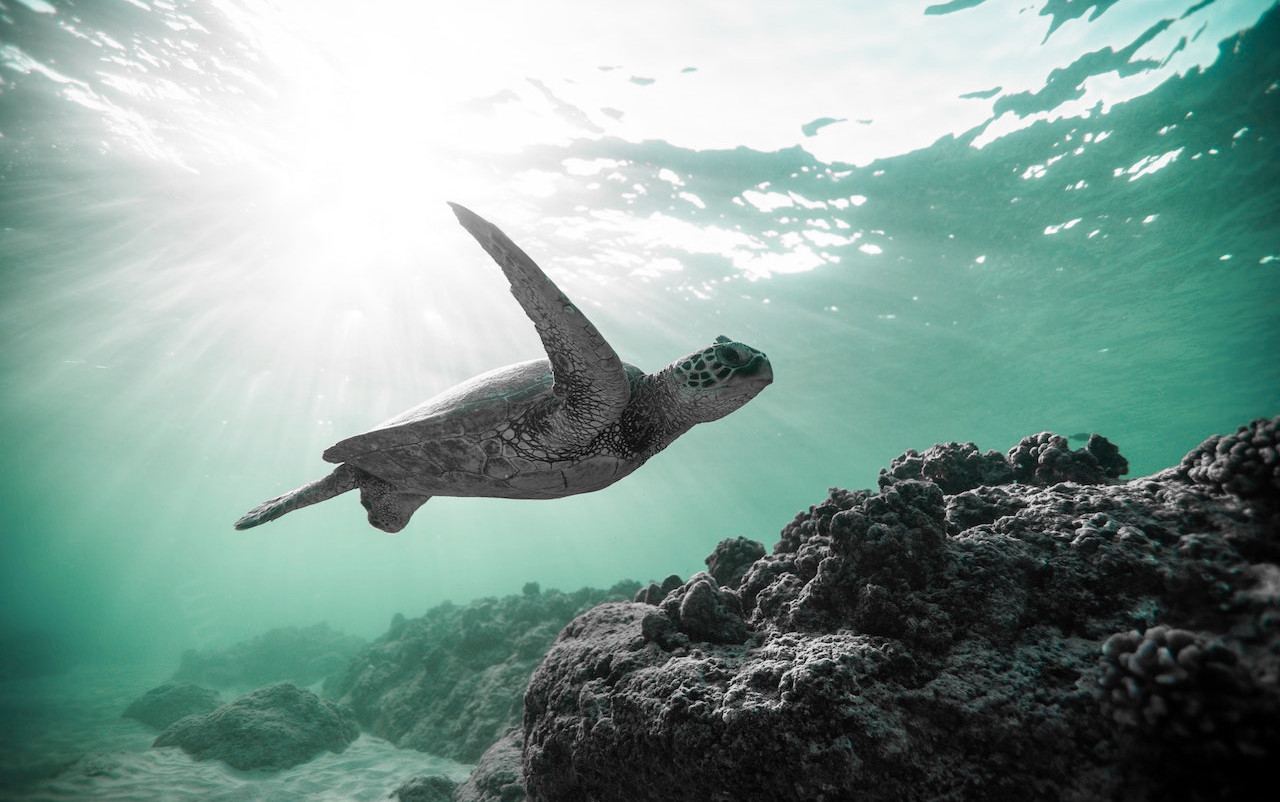
Dive into the importance of preserving aquatic natural resources and you’ll discover a world of wonder that simply can’t be replicated on dry land. From sparkling coral reefs to shimmering freshwater streams, our planet’s waterways house an incredibly diverse array of plants, animals and microorganisms, all of which play a crucial role in maintaining the delicate balance of our ecosystem. From supplying drinking water to providing valuable food resources, it’s clear that we as humans are deeply reliant on healthy aquatic environments – but unfortunately, these precious habitats are under threat from a range of human activities such as pollution and overfishing. By working together to preserve and protect our aquatic natural resources, we can ensure that our planet’s beautiful waterways continue to thrive for generations to come.
What rules of being near natural water bodies can be distinguished for tourists
Wow, when it comes to exploring natural water bodies, there are some pretty important rules that tourists should keep in mind! For starters, respecting the environment is key. This means avoiding littering, disturbing wildlife, or over-fishing. Secondly, following any posted signs or regulations is crucial in order to maintain the safety and protection of the area. Finally, appreciating the natural beauty of the water body without causing any harm should always be a top priority. By following these rules, tourists can ensure that they are leaving a positive impact on the environment and preserving its beauty for generations to come!
Who should control the preservation of nature along the tourist routes
Isn’t it exciting to think about exploring the natural beauty of our world, whether it’s hiking through verdant forests or gazing at the geological wonders of the Grand Canyon? But as we embark on these adventures, it’s important to consider who should take responsibility for preserving these natural landscapes. Should it be the government agencies charged with protecting the environment? Or perhaps the tourist industry, who have a vested interest in ensuring their clients have a pristine experience? These are important questions to ponder, but let’s not forget that the real key to preserving nature lies in our own hands as individuals. With awareness and mindfulness, we can work together to ensure that future generations can enjoy the same breathtaking experiences that we do today.
Why is it vital to create natural areas closed to people
Oh, the benefits that come with creating natural areas closed to people! There is something so special about being in untouched wilderness that is just so good for the soul. But, it’s not just about our personal enjoyment – these areas play a fundamental role in the health of our planet! When we create natural areas that are off-limits to human activity, we are giving nature a chance to breathe, to grow, and to thrive in its own right. For a while, at least, we can take our hands off the wheel and trust in the incredible power of the natural world to heal itself. That’s why it’s vital that we continue to prioritize the creation of these sanctuaries, so that we can protect our planet and ensure it remains a beautiful and thriving home for generations to come.
Can electric transport be considered harmless for the nature
Electric transport has been revolutionizing the way we travel by reducing our carbon footprint massively! With electric cars, buses, and bikes, we are finally on the path to a sustainable future. However, we must not forget that every action has a consequence. While electric vehicles do not emit exhaust fumes, electricity production does. The question remains: can electric transport be considered harmless for the nature? The answer lies in the source of electricity that powers these vehicles. By switching to renewable energy sources like solar, wind, or hydro power, we can truly make electric transport environmentally friendly. The opportunities are endless, and the time for action is now! Together, let’s make a difference and build a brighter, cleaner future for generations to come.
The most beautiful lakes in the world
If you’re a nature lover, there’s nothing quite as breath-taking as gazing out across a mesmerizingly beautiful lake. Whether they’re situated in lush forests or nestled in between towering mountains, the world is home to some truly stunning bodies of water. From the shimmering blue waters of Lake Tahoe in the United States, to the crystal-clear glacial lake of Lake Louise in Canada, there’s something magical about these natural wonders that truly captivates the soul. For those who love to travel and explore the beauty of the natural world, visiting any one of these most beautiful lakes is sure to be the experience of a lifetime.
The 12 Most Beautiful Crater Lakes in the World
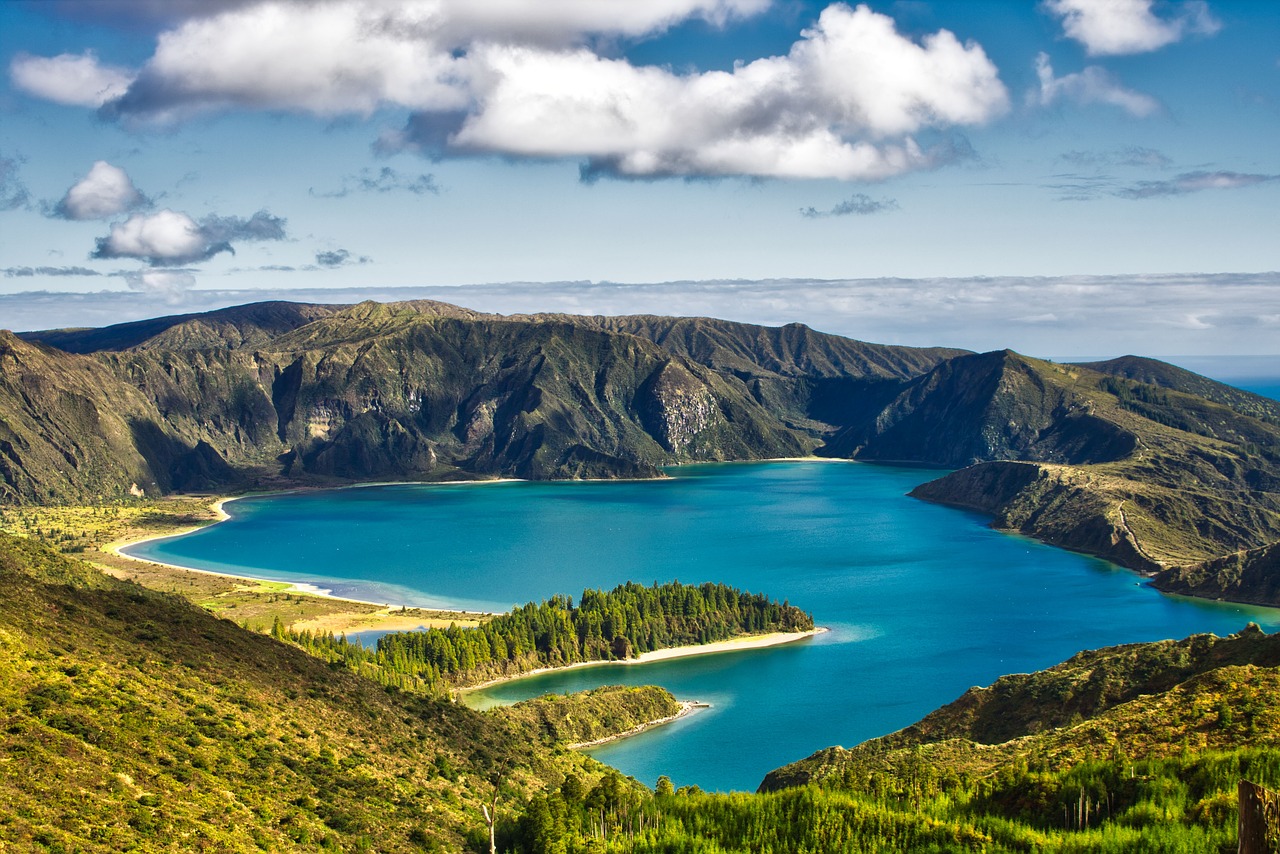
There is something so ethereal and otherworldly about a crater lake. Perhaps it is the fact that they are often located in some of the most beautiful and remote locations on Earth and are extremely protected. Or maybe it is the way that they seem to glow with an inner light. Whatever it is, crater lakes have a special allure that draws visitors from all over the world.
But first… how do crater lakes form? There’s something eerily fascinating about a crater lake. Perhaps it’s the fact that they are formed by such dramatic events, or maybe it’s the way they seem to sit in stark contrast to the surrounding landscape. Whatever the reason, crater lakes continue to captivate the imagination.
The most common type of crater lake is formed when a volcano erupts, blasting material high into the air. This material eventually falls back to earth, creating a circular depression. Over time, rain and snowmelt fill this depression with water, forming a lake. Crater lakes can also be formed by meteorites striking the earth’s surface. In either case, they provide a stunning reminder of the power of nature.
Here, we will explore twelve of the most stunning crater lakes on the planet. Each one is breathtaking in its own unique way.

Crater Lake Oregon
This stunning blue lake is located in the caldera of a collapsed volcano. It is the deepest lake in the United States and one of the most beautiful crater lakes in the world. The water is so clear that you can see down to a depth of 143 meters!
Okama Crater Lake
This crater lake is located on Mount Zao in Japan. It is also known as the “Five-Color Pond” because its waters change color depending on the angle of the sun. In autumn, it is an especially breathtaking sight!
Quilotoa Lake
Quilotoa Lake in Ecuador is another volcanic crater lake with amazing turquoise waters. It is located in the Ecuadorian Andes and is a popular tourist destination. Visitors can hike down into the crater or take a boat ride on the lake.
Mount Katmai Crater Lake, Alaska
This lake is located in the caldera of an active volcano. It is incredibly beautiful, with bright blue waters and stunning views. However, it is also one of the most dangerous lakes in the world because of the risk of volcanic eruptions.
Crater Lakes in the Albertine Rift
The Albertine Rift is a region of Africa that contains several crater lakes. These include Lake Kivu, Lake Tanganyika, and Lake Edward. Each one is unique and worth visiting!
Kelimutu Crater Lake – Flores Island, Indonesia
This lake is located on the island of Flores in Indonesia. It is famous for its three crater lakes, each with its own unique color. The colors change from time to time, making it a truly magical place!
Kaali Crater in Estonia
Kaali Crater is believed to be the result of a meteor impact. It is now a popular tourist destination, with a beautiful lake at its center. Visitors can take boat rides or go swimming in the lake.
Viti Geothermal Lake, Iceland
This stunning blue lake is located in the caldera of an inactive volcano. It is one of the most popular tourist destinations in Iceland and has been featured in many movies and TV shows.
Lake Taupo, New Zealand
Lake Taupo is the largest lake in New Zealand and one of the most beautiful crater lakes in the world. It is surrounded by mountains and has a stunning blue color. Visitors can enjoy boat rides, fishing, and other activities on the lake.
Lonar Crater Lake, India
This crater lake is located in India and is believed to be the result of a meteor impact. It is a popular tourist destination and has been featured in many movies and TV shows.
Crater Lake, Mount Pinabuto
This lake is located in the caldera of an inactive volcano. It is one of the most popular tourist destinations in the Philippines and has been featured in many movies and TV shows.
Vulcan Point within Crater Lake, Taal Volcano
This lake is located inside the crater of an active volcano. It is one of the most popular tourist destinations in the Philippines and has been featured in many movies and TV shows. It is also one of the most dangerous lakes in the world because of the risk of volcanic eruptions.
These are just a few of the most beautiful crater lakes in the world. Each one is unique and worth visiting! So, which one will you add to your travel bucket list?
How to Write an Environmental Law Essay?

As an independent complex industry, environmental law began to emerge in the 1960s. It was when humanity faced serious problems of preserving favorable habitats and natural objects, which significantly degraded under the influence of negative anthropogenic activities, accompanied by intensive industrial production, extensive extraction of natural resources, testing weapons of mass destruction.
All this, together with such cataclysms as droughts, floods, and other natural phenomena dangerous to human life and the environment, has made mankind think about the urgency of effective action, including at the international level, ensuring sustainable development, which means maintaining a balance between activities to meet the urgent needs of society and measures to protect the environment and the rational use of natural resources (minerals, forests, water bodies, etc.).
Environmental Law as an Integral Part of the Training Program
Currently, the discipline “Environmental Law” is an integral part of the training program in the field of law. Its study by applicants for higher education is due to the dynamic development in recent decades of public relations in the field of nature management, environmental protection, and environmental safety. The set of legal norms regulate the behavior of different actors in each of these three areas of public relations and is the legal basis on which such a separate legal field of knowledge as environmental law is based.
In the course of mastering the discipline, the student receives a number of valuable knowledge, in particular, studies:
- The main provisions of the science of environmental law;
- The essence and content of the basic concepts, categories, and institutions of environmental law;
- The main components of the natural environment;
- The legal status of subjects of environmental law;
- The system of bodies of republican environmental management;
- The system of environmental standards;
- The concept and types of environmental control.
Here is a list of the skills that students acquire:
- Operate with environmental legal concepts and categories;
- Analyze legal facts and environmental legal relations arising in connection with them;
- Analyze, interpret, and correctly apply environmental and legal norms;
- Make decisions and take legal action in strict accordance with environmental legislation;
- Analyze legal facts, legal regulations, and environmental legal relationships;
- Analyze law enforcement practice.
Types of Environmental Law Assignments Provided by the Curriculum
The curriculum provides a list of tasks performed by students in the process of studying the discipline “Environmental Law”:
- Execution of group and individual tasks;
- Essay writing;
- Home laboratory tests;
- Working with a book;
- Solving various tasks and performing exercises;
- Writing term papers and dissertations;
- Preparation of reports and abstracts, etc.
The Role of Essays in the Study of Discipline
Essays are considered one of the main types of work on environmental law. They are regularly performed by students, as are a form of independent written research that best engages young people in systematic work with literary sources, enriches knowledge and develops analytical skills, public speaking skills, forms responsibility, and combines personal interest with public necessity, i.e. qualities necessary for the future specialist.
Stages of Work on Creating an Environmental Law Essay
To write a successful environmental law essay, you need to follow these steps:
- Choose a topic for independent research. It is determined on the basis of personal and public interest, significance, as well as the availability of literary sources on the chosen problem;
- Get acquainted with bibliographic indexes, catalog, reference literature of the library and determine the range of research sources and literature on the selected problem;
- Examine selected sources;
- Make a detailed work plan, i.e. structure the research;
- Systematize the collected material by sections and problems of the essay;
- Express your own opinion on the research problem;
- Write a draft of the essay;
- Carry out author’s review of the written text and make additions;
- Perform final editing.
Recommendations for Writing an Environmental Law Essay
Consider the following guidelines to keep in mind when writing an environmental law essay:
- You must decide on the topic of your work, and, if possible, narrow it down, so as not to lose thought and follow a clear plan. The topic should first of all interest yourself, give you the opportunity to realize yourself and all your potential;
- Having decided on the topic, determine the purpose and objectives of the essay;
- Make a plan so you will work more efficiently and save time;
- Make a schedule of work on the content of the essay in such a way that you have time to analyze scientific literature and write the text;
- When working on the text, try to make it have its own style. When writing the theory, use materials from a variety of sources. Thus, you will demonstrate your ability to navigate various sources of information, as well as your ability to reasonably prove a point of view.
Create quality environmental law essays without any problems!
30 Ecology Writing Prompts for Students
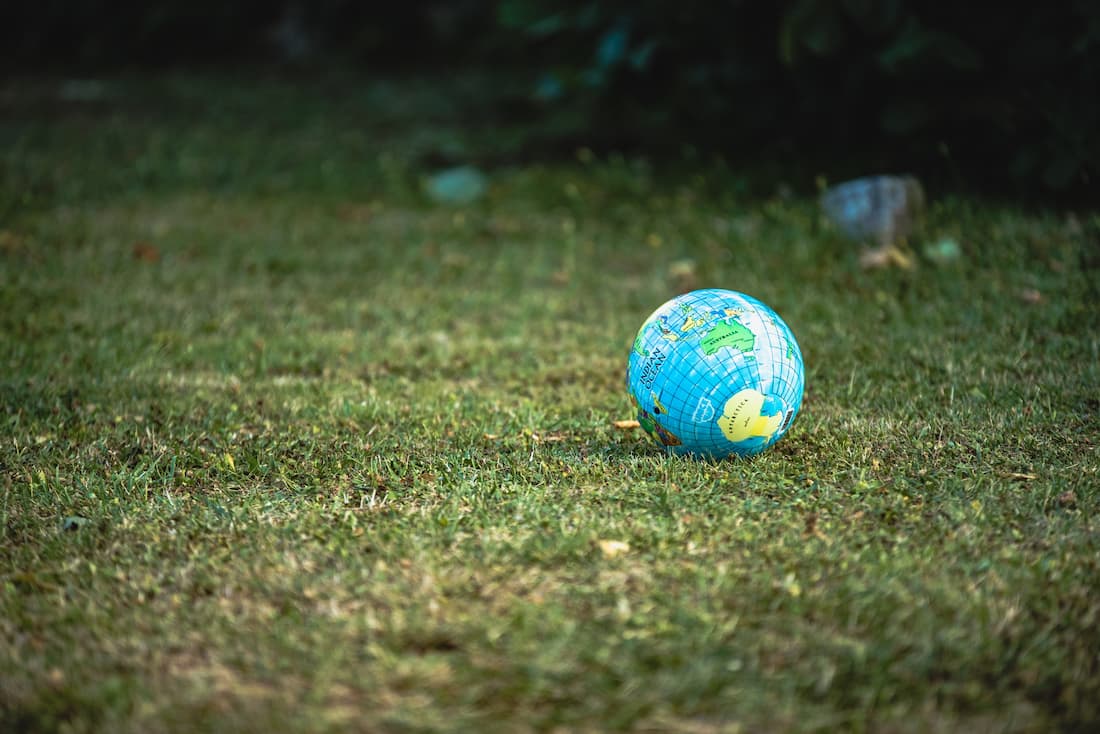
Today, more and more people are concerned about environmental problems. Students study ecology in universities. Professors often ask students to write research papers or essays on ecology. Students need to understand the problems and their possible solutions. It is important to choose the right topic and conduct research.
Ecology is an important subject, yet you may not have enough time for the writing. To write a good-looking paper, you need to have writing and research skills. Some students may not like ecology writing. In this case, you can address an online writing service like CustomWritings.com. This is a service that creates writing assignments on any topic. You can order the ecology writing and get the highest mark.
What Are the Prompts for Ecology Writing?
It is important to choose an interesting topic for your writing. There are a lot of environmental problems you can write about. Let’s look at the best options for your paper.
- How does global warming affect society? Here, you can write about the term and the results of global warming. Describe the consequences for different countries.
- Why are some species at risk? Select plants or animals that are at risk of being endangered. Then you can talk about the reasons and what we can do to save the species.
- What are the problems in the North Pole? Write about the animals that live in the North Pole. What environmental problems do they have?
- What natural disasters are present in your area? Each continent has its climate conditions. You can list them and the disasters you can have depending on your climate.
- An endangered species in the ocean. Choose one endangered plant or animal you can find in the ocean. Why is it endangered? What problems do we face when protecting it?
- Can we live without predators? Predators are a vital part of the food chain. Talk about the importance of predators in the world. Describe a situation where there are no predators.
- How do plants live in hard weather conditions? You may write about plants’ adaptations to the climate. Describe in short the climate change and its results.
- How does nutrition work? Describe the nutrition process in detail. Talk about its importance for living organisms.
- What is the symbiosis relationship? Define the term ‘symbiosis’ and its types. Present the examples of organisms that use this type of relationship.
- Present the ecology research methods. You can create a scientific paper by presenting research methods. Talk about the similarities and differences.
- What can volunteers do for the ecology? Choose the most popular volunteering ecology programs. Talk about what we can do to change the environment for the better.
- How can companies help the environment? Describe the ways for businesses to solve environmental problems. Write about the hindrances to doing that.
- Why should we preserve the environment? You can write about the most important modern problems. What can we do to save the planet?
- How can we recycle waste products? You can present the recycling opportunities in your area. What products can you recycle, and what are the most popular places for that?
- How does the environment impact your food? You can also provide some tips to protect yourself from spoilt products.
- How can we make production more environmentally friendly? Talk about the best ways to make the production of food safer. Describe the options for green packages for food deliveries.
- What is ecology? If you are studying ecology, a good option can be to define this term. In your paper, you can also describe its future research opportunities.
- The advantages of recycling waste. Present the benefits of recycling for people and nature. List the recycling opportunities in the world and your country.
- How can we prevent the pollution of nature? List the main sources of natural pollution. Talk about the ways a usual human can prevent the process and help the planet.
- What are the main terms of genetics? Define the term ‘genetics’ and its main statements. How is genetics important for today’s science?
- What are the tips for tourists? Sometimes, tourists can harm the environment. They can pollute forests or hunt endangered animals. Talk about the tourism problems and how a person should behave in another country.
- What are the main green agreements in the world? List and describe the most popular environmental agreements of different countries.
- What is the environmental law in your country? List the main statements of law related to nature. What rules should people and companies follow?
- What is the greenhouse effect? Write about how it works and what its main results are.
- What have the ecologists achieved for nature? The main ecology programs and how they changed the situation.
- What are the results of deforestation for animals? The reason for deforestation and how we can prevent the process.
- How can we prevent chemical pollution? The main dangerous chemicals and how companies can save the environment.
- What are the most affected regions of the world? The most popular regions that have a lot of environmental problems.
- What are the most dangerous chemicals for the environment? How can we replace the substances to make them safer?
- How do earthquakes affect people’s lives? The main regions with earthquakes and why it is dangerous for people and nature.
Choose the best topic for your paper and start writing.
How To Train Your Dog To Track People At Great Lakes
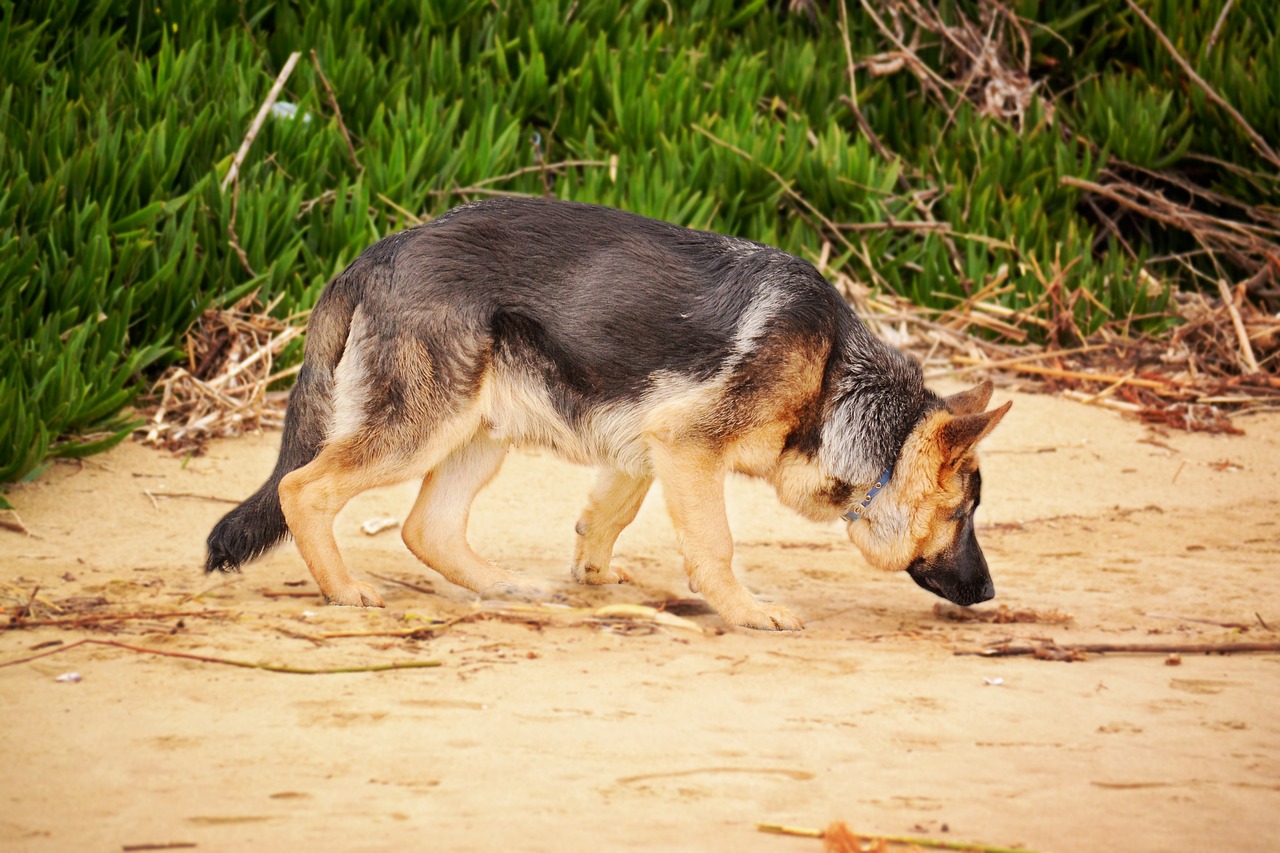
Dogs are amazing creatures capable of learning so many things that make humans love them as pets. They start with “sit and stay”, then “roll over”. But as your dog matures, you notice that they learn things faster and more easily. With their perfect sense of smell, it is a great idea to train your dog to track people especially at Great Lakes. But make sure to track the location of your dog first just in case!
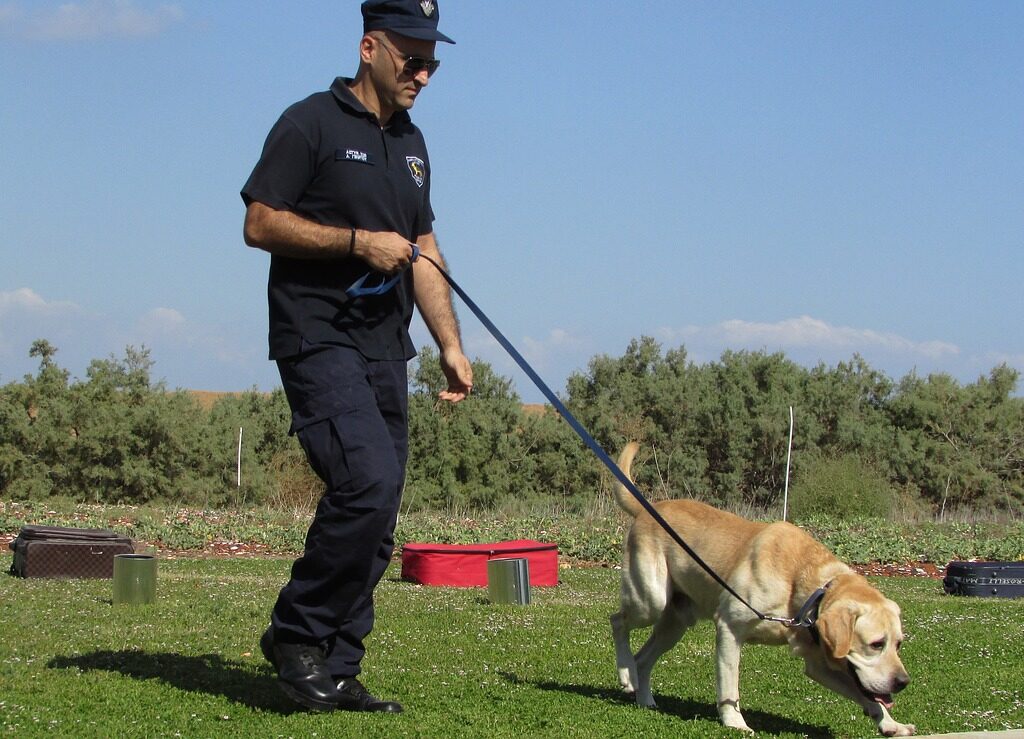
They love a fun hide-and-seek game because it challenges their skill while having fun. You can start teaching your dog to identify objects through its scent, smell the air, and follow a track. Dogs can learn all three simultaneously to improve their smelling skill. But it will start with an item or anything that you will like for them to look for. It is best to start with their favorite toy. First, you’ll make it simple and fun. And as they learn the game, you’ll make it more difficult for them to find it and they’ll be needing to use their nose to locate the item.
There are different methods to train a dog to track people. The three most common methods include the Hotdog Method, the Spray Bottle Method and the Clothing Method. We’ll discuss the Hotdog Method as an initial training guide and then advance to the Clothing Method.
Preparation
As you get started, you’ll notice that some breeds are smarter and learn faster than others. It is also best to start training while the dog is younger. Make sure to prepare some materials that will help you make these training methods effective and efficient.
Prepare the following:
- Treats
- Leash
- Harness
- Small flags
- Human clothes
- Hotdogs
Dogs are natural smelling machines. But the key to effective training is to teach them how to use their nose properly with patience and consistent practice. Remember that you still need to regularly practice with your dog even if he has mastered the skill of tracking already.
The Hotdog Method
You can use any kind of hotdog for you and your dog to use during practice. It is best to start early in the morning, in a clear field, so that there will be no human smell in the area.
First thing to do is tie up your dog in the area. Get two chunks of hotdogs (1 inch in length) and smash one chunk on the ground using your feet. This will help release the smell of the grass with the hotdog smell smeared on your shoe.
Turn away from the spot and walk forward to create a trail. Do not forget to drop a small piece of hotdog every 6 to 10 feet. When you reach 20 to 30 feet of trail, drop a piece of your clothing on the ground and place a treat on top of it.
Now, go back to your starting point by following the trail you created backward and release your dog. Take him to the area where you smashed the hotdog on the ground and encourage him to sniff it. Give him the “find it” command as he starts going around the area looking for the trail. He will eventually follow the trail on his own, and let him lead you to the path you’ve created. Give him praises as he does a good job of following the trail.
Keep repeating these steps to create a new trail. Your dog will start to track the combined smell of grass, smashed hotdog and your scent.
Once your dog mastered this, make some hard turns and confuse him in the new trails you do. As he masters the skill, get help from other people in making a new trail for him without any hotdog. Give your dog some time to familiarize his nose with the smell of the person creating the new trail for your dog.
The Clothing Method
In this method, you can use old clothing like underwear or a sock to help your dog familiarize his nose with your smell. Stay in a closed room with your pup and hide the clothing in plain sight. Instruct him with a “find it” command. If he is not familiar with the command, you would have to guide him to give him an idea of what he should do. As he gets the hang of it, try hiding the clothing out of sight so he’ll have to use his nose to find the clothing.
You can continue this training outdoors. Grab any clothing and create a trail by dragging the item on the ground and leaving it at the end of the trail. Walk back by following the trail you created backwards so as not to cause any confusion.
Let your dog out of his leash and tell him to “find it”. He should start looking for the scent of the clothing and following the trail you created. Give him a treat or praise whenever he follows the trail correctly and finds the clothing you kept at the end.
Keep repeating the steps until your dog masters the skill. Afterward, start working with other people so your dog will learn how to track others using their clothing.
7 important arguments for environmental protection

Nothing lasts forever. Landscapes disappear, populations die out. It’s the natural course of things. Why try to protect anyone? The strongest survive, the weakest die–the law of nature. Environmentalists are faced with this kind of reasoning time and time again. So in this article we want to present a number of convincing arguments as to why conservation and the promotion of sustainable development are important in spite of all the arguments of the skeptics.
Environmental protection creates jobs and stimulates the economy
Thousands of people work in conservation around the world. It encompasses many sectors, from organic farming to generating energy from wind, water, solar and biofuels. From inspecting protected areas to setting up hiking trails in national parks.
Environmental protection stimulates scientific research and technological innovation
Man has learned a lot from nature, and continues to learn. The idea for the first flying machine was inspired by watching birds fly. Tropical forests are a rich source of many medicines, including antibiotics or remedies for malaria. Lotus petals inspired the idea of making dirt-repellent surfaces and modern paints. Almost every animal and plant has its technical secrets, which scientists discover and inventors create know-how. In other words, humans peep from nature and copy. As ecosystems and wild species disappear, the basis for scientific research and technical improvements is sharply reduced.
Environmental protection prevents natural disasters
Nature seeks balance. So forests absorb CO2, grow and turn it into oxygen. This makes life possible and also slows down climate change. In addition, forests provoke rainfall and the circulation of water in nature, contributing to its purification and transformation into drinking water. In addition, forests and green spaces protect the soil from erosion and prevent landslides and avalanches. Destroying forests drastically changes the climate of entire regions and causes dehydration and desertification. Or, conversely, it can cause massive floods, resulting in the flooding of entire areas and the evacuation of hundreds of thousands of people. By treating ecosystems with care, such troubles can be avoided.
Environmental problems have no geographic or political boundaries and affect everyone
The term “climate refugees” has already entered the international lexicon. New Zealand was one of the first countries to officially welcome in its territory people from other regions affected by natural disasters caused by climate change. Further climate change could lead to tremendous not only economic but also political and economic disruption. Accordingly, the struggle to save nature also has no boundaries: people from all over the world work together to find solutions to ecological problems and to promote models of sustainable development, opening up new horizons for themselves.
Protecting the environment teaches us to take responsibility for ourselves and others
In the course of our daily lives we consume the world’s natural resources. For the production of fruit juices, meat, chocolate, palm oil and other products, entire forests, home to millions of living creatures, are cut down. The industrial cultivation of cotton leads to the disappearance of bodies of water and, again, accelerates climate change and the lives of many people in different countries. So we have to watch how much and what we buy and how the production of these goods affects the life of our planet, that is to take responsibility for our actions, because:
Protecting the environment is protecting people.
By protecting nature, we protect ourselves. Lack of natural resources causes economic crises, wars and epidemics. Even small changes in the ecosystem can lead to enormous disasters. For example, the death or decline in the population of bees will affect not only the production of honey, but also the entire system of food production, since bees pollinate 80% of useful and wild plants. No bees – no honey, no fruit, very few vegetables. This leads to hunger, disease, migration, political turmoil and wars.
Protecting the environment is about protecting people
By protecting nature, we protect ourselves. Lack of natural resources causes economic crises, wars and epidemics. Even small changes in the ecosystem can lead to great disasters. For example, the death or decline in the population of bees will affect not only the production of honey, but also the entire system of food production, since bees pollinate 80% of useful and wild plants. No bees – no honey, no fruit, very few vegetables. This leads to hunger, disease, migration, political turmoil and wars.
Involvement in environmental protection is a source of joy
We study nature, admire it, ride bicycles or hike, swim in rivers and lakes. We meet like-minded people. Many tourist regions lure guests, promising to show them wild, untouched nature. Both children and adults love to watch animals, birds or fish. Any local successes – eliminating landfills, saving endangered populations, creating nature reserves – become a cause for global joy and inspire all other members of the environmental movement.
We humans are part of nature and its cycles. Even if we think that “man has explored and conquered nature,” we are highly dependent on it. Our impact on ecosystems has notable consequences for our daily lives. But they can be predicted and avoided if we think with our heads and act carefully. But it is also possible to promote positive change. Even small things can improve the state of nature and our life on the planet.
Environmental documents of an enterprise
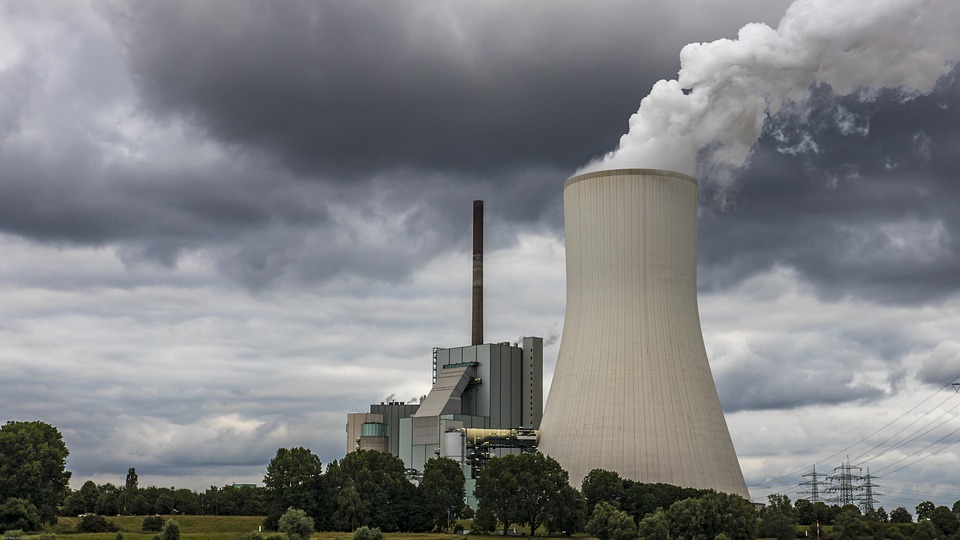
The record keeping system in the organization, regardless of whether it has established an environmental service or department, or whether this direction is outsourced, should provide accounting and storage of documents on environmental protection.
The main such document is an environmental passport. Its availability indicates that the company does not violate environmental regulations and ensures environmental safety, its activities do not harm the environment and the local population, the management is carried out competently.
In addition to the environmental passport, the list of mandatory documents in the environmental protection system includes:
- Order on the creation of the environmental service or the appointment of an authorized person.
- Regulations on the environmental protection department at the enterprise.
- Acts of inspections by state supervisory bodies and documents on payment of fines, if any.
- Statistic reports for the last 3 years.
- Documents regulating the rules of use of natural resources.
- Documentation (acts, protocols, etc.) on measures taken to protect the atmospheric air, water resources, disposal of production wastes.
- Documentation reflecting the results of studies conducted in the field of environmental safety.
Can I compost paper tissues?

The short answer is yes, because the chemical basis of napkins, paper towels and toilet paper is cellulose, a natural polysaccharide, a key component of the cell wall of plants. Because of its natural composition, these paper products are able to decompose naturally under the action of cellulose, an enzyme that is produced by various members of microorganisms.
How do I compost wipes?
To compost paper tissues and towels correctly, we recommend following the following rules:
- Don’t throw a large number of tissues into the composter at one time. If you do need a lot, make sure that the organic mass is balanced: distribute the tissues between the layers of compost, mix them in, this will make fermentation more efficient.
- If possible, shred the wipes into small pieces.
- Do not compost wipes with traces of feces and inorganic substances: paint, petrol, car oils, etc.
- Do not compost wet wipes because in addition to cellulose, they may contain synthetic fibers and a fair amount of undesirable chemicals: moisturizing lotions, detergents, fragrances. However, you can compost any wet wipes that are labeled “home compostable.”
- Do not compost antibacterial wipes or those that contain isopropyl alcohol, as these have a detrimental effect on the microflora in your composter.
So, thin-walled cellulose products that are not chemically treated and not contaminated with inorganic substances can be composted. The main thing is to add enough bokashi so that the fermentation process is as efficient as possible.
